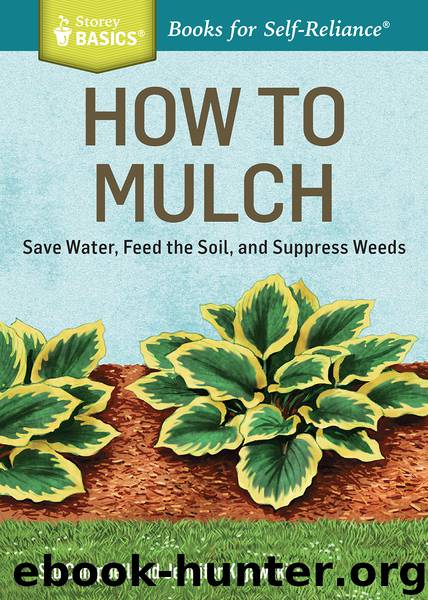How to Mulch by Stu Campbell

Author:Stu Campbell
Language: eng
Format: epub
Tags: garden;yard;mulch;mulching;retain moisture;reduce weeds;save water;feed soil;suppress weeds;mulch types;reference;home;landscape;feeding mulches;living mulches;covering sheet mulching;protect plants;Storey Basics
Publisher: Storey Publishing, LLC
Published: 2014-11-13T16:11:00+00:00
Mulching Basics
Use material that won’t compress and smother the soil.
Apply 2 to 4 inches over the root zone.
Never allow any mulch to contact the plant stem.
Don’t use the same mulch year after year in your vegetable garden. This advice is based on the same principle that it is not a good idea to plant the same crop in the same place year in and year out. A good mulching may last for several seasons. When finally it does decompose, it should be replaced by a different material.
Apply thicker mulches to sandy, gravelly soils and thinner mulches to heavy clay soil. Avoid mulching at all in low-lying spots — places that are sometimes likely to be “drowned” with water. Although it isn’t always necessary, you can remove mulch during a particularly rainy period to prevent the soil from becoming waterlogged.
Choose the right mulch color for where you live and the plants you’re mulching. Darker mulches like buckwheat hulls and walnut shells absorb heat and warm the soil beneath them. Lighter mulches, such as ground corncobs, reflect light and heat the soil less.
Download
This site does not store any files on its server. We only index and link to content provided by other sites. Please contact the content providers to delete copyright contents if any and email us, we'll remove relevant links or contents immediately.
Turbulence by E. J. Noyes(7717)
The Thirst by Nesbo Jo(6447)
Gerald's Game by Stephen King(4383)
Be in a Treehouse by Pete Nelson(3654)
Marijuana Grower's Handbook by Ed Rosenthal(3519)
The Sprouting Book by Ann Wigmore(3419)
The Red Files by Lee Winter(3284)
The Remains of the Day by Kazuo Ishiguro(3146)
Sharp Objects: A Novel by Gillian Flynn(2851)
Christian (The Protectors Book 1) by L. Ann Marie(2607)
Organic Mushroom Farming and Mycoremediation by Tradd Cotter(2571)
The Culinary Herbal by Susan Belsinger(2342)
Stone Building by Kevin Gardner(2297)
Lilac Girls by Martha Hall Kelly(2204)
The Starter Garden Handbook by Alice Mary Alvrez(2202)
The Unlikely Pilgrimage of Harold Fry by Rachel Joyce(2139)
The Lean Farm Guide to Growing Vegetables: More In-Depth Lean Techniques for Efficient Organic Production by Ben Hartman(2014)
Urban Farming by Thomas Fox(1987)
Backyard Woodland by Josh VanBrakle(1835)
